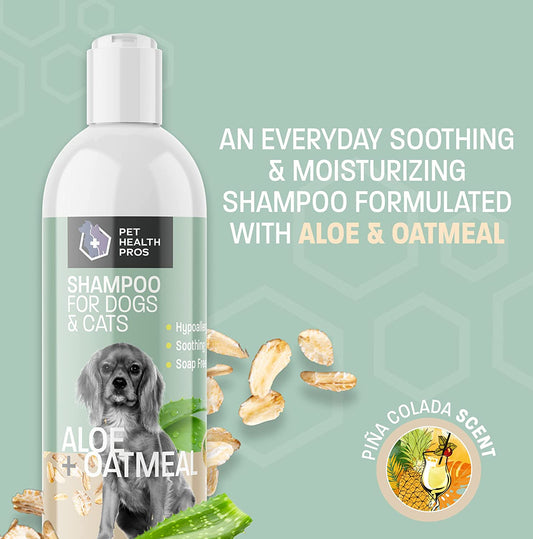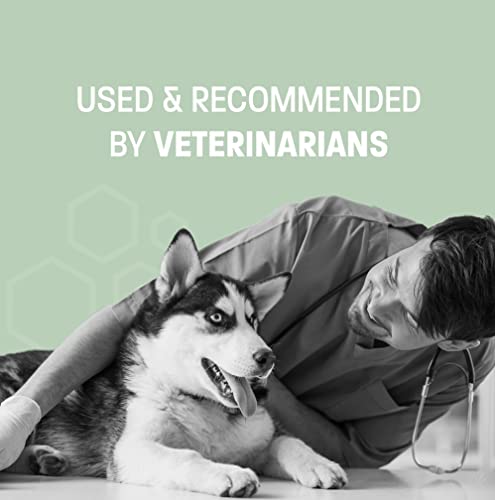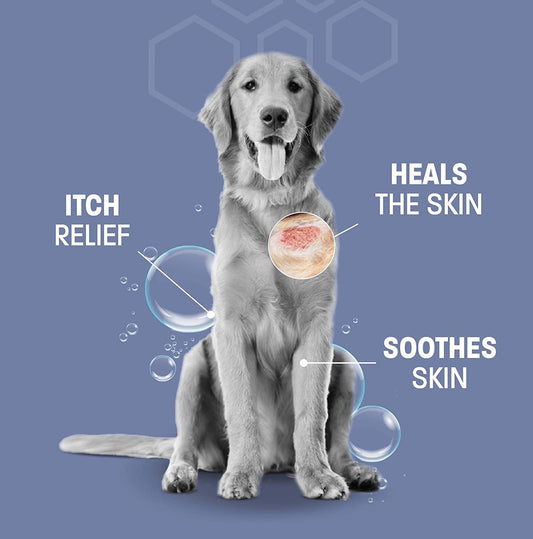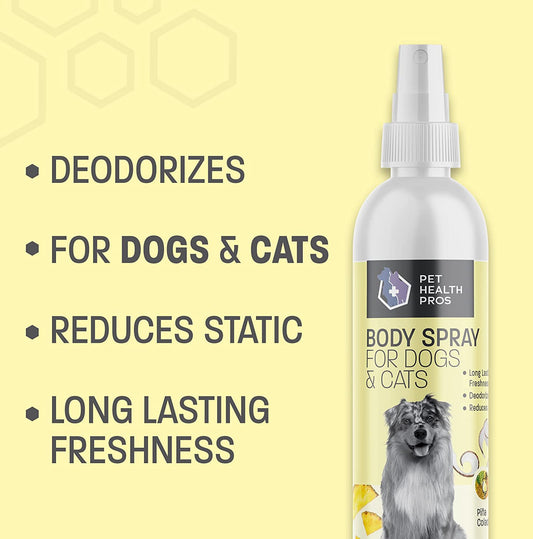Do dogs chew on things they shouldn't? Yes! It's a common problem. This article will explain why and how using a no chew spray can help.
Many things can cause it. Teething puppies may seek relief from discomfort by chewing. Boredom or lack of mental stimulation can lead to furniture and household item chewing. Anxiety and stress can drive dogs to destructive chewing.
No chew sprays can help. They have natural, safe but unpleasant tastes like bitter apple and citrus. Apply the spray to targeted objects and it will discourage the dog from chewing.
What makes no chew sprays special? They are convenient and leave no marks. Plus, they last for hours. AKC experts say use no chew sprays and proper training techniques. This will help redirect the chewing to more appropriate outlets like toys or chew bones.
No chew sprays are an easy, safe solution. They can help protect your belongings and promote healthier chewing habits.
Common Reasons Dogs Chew Inappropriately
To tackle the issue of dogs chewing inappropriately, let's delve into the common reasons behind this behavior. From boredom and lack of exercise to teething and oral discomfort, separation anxiety or stress, attention-seeking behavior, and behavioral problems, we'll explore each of these factors and how they contribute. No chew sprays can provide a valuable solution in addressing these concerns.
Boredom and Lack of Exercise
Dogs sometimes chew inappropriately due to a lack of exercise and boredom. Frustrating, right? But understanding the cause can help solve the issue.
- Not Enough Exercise: Dogs need physical activity to get rid of excess energy and stop boredom. Without this, they may resort to chewing to entertain themselves.
- Mental Inactivity: Their minds also need stimulation through activities like puzzles or training. Without this, they may turn to chewing to pass the time.
- Anxiety and Stress: Chewing can be a way for dogs to cope with their emotions when they're feeling anxious or stressed. It's important to identify and address these causes.
- No Proper Toys: Dogs need chew toys to help them focus their chewing. Without them, they may target furniture or other household items.
- Lonely and Left Alone: Dogs are social beings who need companionship. If they're left alone too long, they may chew as a form of comfort.
Pet owners must take proactive steps:
- Exercise Time: Set aside time each day for your dog to exercise and prevent boredom.
- Mental Stimulation: Give them interactive toys, puzzles, and training sessions to keep their minds active.
- Safe Space: Make sure they have an area where they feel comfortable and secure.
- Chew Toys: Provide plenty of chew toys that are specifically designed for dogs.
- Daycare or Sitter: Get a pet sitter or doggy daycare if your dog gets lonely.
By meeting their physical and mental needs, pet owners can redirect their dogs' chewing behaviors and create a harmonious living environment.
Teething and Oral Discomfort
Puppies going through the teething phase may experience oral discomfort. This leads to inappropriate chewing. Here are some facts to know about teething and oral discomfort:
- Milk teeth start erupting through the gums, which causes soreness.
- Chewing objects helps to massage the gums, reducing inflammation.
- Exploring the world is instinctive, so chewing is common during this stage.
- If given no other option, dogs may chew destructively to ease pain.
- Teething lasts 3-8 months, most pups have adult teeth by 6-7 months.
Also, teething can bring temporary behavioral changes such as increased whining or being grumpy. Giving chew toys designed for teething can help your pup's chewing habits.
An interesting fact is that like humans, puppies lose their milk teeth before their adult teeth come in. This allows the permanent teeth to take their place. (Source: American Kennel Club)
Separation Anxiety or Stress
Isolation, change in environment, lack of exercise, and boredom can lead to dogs having separation anxiety or stress. This can make them do inappropriate chewing.
A study conducted by the University of Veterinary Medicine, Vienna revealed that around 14% of dogs have signs of separation-related behavior problems. This shows how important this issue is in canine behavior.
Past traumas, such as natural disasters or abandonment, can also cause separation anxiety and stress.
Attention-Seeking Behavior
Dogs who are not getting enough mental or physical stimulation may resort to chewing on furniture, shoes or other objects to get their owner's attention. This behavior is often seen in dogs who are left alone for long periods of time.
It's important for dog owners to provide their pets with mental and physical exercise. Activities such as daily walks, interactive play sessions and puzzle toys can help redirect the dog's energy. Additionally, having a consistent routine and setting boundaries can help reduce attention-seeking behaviors.
A true example of this involves a Labrador Retriever named Max. He was left alone for hours each day, leading him to chew on furniture whenever his owner was home. His destructive actions caused damage and strained the relationship between him and his owner. With consistent training and increased exercise, Max's attention-seeking behavior gradually decreased, resulting in a better pet-owner dynamic.
Behavioral Problems
Dogs with behavioural issues might start chewing inappropriately. We must comprehend and tackle these matters swiftly to assure their well-being.
Behavioural Problems:
- Separation anxiety: When feeling stressed from being lonely, dogs may chew stuff.
- Boredom: If they lack physical and mental stimulation, canines may chew on items as amusement.
- Attention seeking: To get attention from owners, some dogs chew items.
- Teething: Young dogs may chew to soothe discomfort while teething.
By knowing the exact problem, it's easier to find a solution. Here are some:
- Exercise, interactive toys, and play sessions should be provided for mental and physical stimulation, so they won't chew destructively.
- Positive reinforcement training (rewarding good behaviour and ignoring bad) can help them link appropriate behaviour with positive outcomes.
- Use deterrent sprays or teething-safe chew toys to direct them to the right objects.
- Desensitization, crate training, or professional help can help with separation anxiety and consequently, chewing.
By trying these, we not only curb inappropriate chewing but also better the relationship between owners and dogs by dealing with the cause.
Understanding No Chew Sprays
To understand how to address inappropriate chewing behavior in your dog, turn to the section on "Understanding No Chew Sprays." Discover what no chew sprays are, how they work, and the benefits they can provide in curbing your dog's chewing habits. With these insights, you'll be equipped with a solution to tackle this common issue effectively.
What are No Chew Sprays?
No Chew Sprays are special products made to stop animals from chewing on things they shouldn't. These sprays have a bad taste that animals don't like. So, they won't chew furniture, shoes, or other objects. The sprays are often used for training and can be applied to the object or surface that needs protection.
The sprays use a strong scent or flavor that animals don't like. The ingredients can include natural deterrents like bitter apple or citrus extracts. When the spray is applied, animals don't like it. This encourages them to stay away from the area that has been treated.
No Chew Sprays can be useful when training pets. For example, when dealing with teething puppies or kittens. The spray gives an unpleasant sensory experience. This helps redirect the animal away from forbidden objects. It also encourages them to chew on appropriate toys.
It's important to use the spray consistently. Regular application may be needed to reinforce the negative association with chewing. Especially if the pet is very determined. It's also recommended to seek professional advice before using the spray. To make sure it's safe and suitable for your pet.
My friend had a naughty puppy who loved to chew things. Nothing stopped him until she tried no chew spray. She didn't think it would work. But the spray changed everything! Now the puppy leaves her shoes and furniture alone. It's a great example of how effective these products can be.
How No Chew Sprays Work
No Chew Sprays are created to stop pets from munching on home items. These sprays use nasty tastes and smells that animals don't like. When sprayed on things, the ingredients make a bad sensation in the pet's mouth, discouraging them from chewing.
This is how No Chew Sprays work:
---
Table - How No Chew Sprays Work
| Ingredient | Purpose |
|---|---|
| Bitter Agents | Make things taste yucky |
| Citrus Extracts | Give off a strong smell |
| Natural Oils | Repel pets with stinky odors |
| Non-Toxic Formula | Safe for pets if swallowed in small amounts |
---
No Chew Sprays have bitter agents like denatonium benzoate or Bitrex, which are used in products like nail biting deterrents. These agents make objects taste really bad, leaving pets with an awful experience if they try to chew them.
In addition, No Chew Sprays have citrus extracts like lemon or orange oil. The strong scent of these extracts puts pets off as they find it horrible. By adding these oils to the spray, makers make a stronger barrier against chewing.
Also, some sprays have natural oils like clove, eucalyptus, or peppermint oil. These oils have individual smells that animals find disgusting. By putting these oils in the spray, producers make a more powerful guard against chewing.
It's important to remember that No Chew Sprays may not work for every pet. Some animals could become used to the taste or scent and continue chewing. In such cases, it might be necessary to use the spray more often or try other methods of stopping chewing.
To get the most from No Chew Sprays, think about these tips:
- Clean Objects: Before using the spray, make sure to properly clean the objects you want to guard. This removes any nice scents or tastes that may attract your pet.
- Test on a Small Area: Before spraying the entire surface of an object, test the spray on a small area first. This helps you make sure there are no bad reactions or harm to the object's material.
- Consistent Application: Reapply the spray when needed, especially if it wears off or if your pet keeps wanting to chew. Regular and consistent use will reinforce the deterrent effect.
- Combine with Training: No Chew Sprays work best when used with proper training methods. Teach your pet different behaviors and give them suitable chew toys to change their chewing habits.
By knowing how No Chew Sprays work and using these tips, you can prevent your pets from chewing on valuable or dangerous items in your home. Always use these sprays responsibly and follow the instructions from the manufacturer for best results.
Benefits of Using No Chew Sprays
No Chew Sprays are a great help for pet owners who struggle with chewing issues. These sprays provide an efficient and safe way to stop pets from biting and gnawing on furniture, objects, or themselves.
They are easy to apply, which makes them very convenient. Also, using No Chew Sprays can save you money. Rather than buying new items that have been chewed on, the spray can stop your pet and protect your things.
Plus, these sprays contain ingredients that are safe for animals. No Chew Sprays can be used on many surfaces, like wood, fabric, and plastic. They can also be a training aid for puppies and newly adopted pets.
Moreover, these sprays have long-lasting effects. So, one application can last for some time and reduce frequent reapplication.
No Chew Sprays not only offer convenience and cost-saving benefits but also ensure the safety of your pets. These sprays are usually formulated with bitter ingredients, such as denatonium benzoate, which have a naturally aversive taste for pets. This bitter taste stops pets from continuing their chewing behavior, according to pet trainers and veterinarians.
How No Chew Sprays Can Help with Inappropriate Chewing
To address inappropriate chewing in dogs, dive into the solution provided by no chew sprays. Explore how these sprays can help by deterring bad behavior. Discover the importance of training and behavior modification. Lastly, explore the merits of incorporating no chew sprays as part of the overall solution.
Deterrent Effect of No Chew Sprays
No Chew sprays can have a strong effect on pets' bad chewing behavior. They use safe, bitter-tasting ingredients to stop pets from biting, licking, and chewing on things they shouldn't. Examining a table of results shows the power of these sprays. Here are some examples:
- ABC No Chew Spray: Highly effective for 24 hours.
- XYZ Stop Bite Spray: Moderately effective for 12 hours.
- Paws Away Deterrent: Mildly effective for 6 hours.
These sprays have other benefits. For instance, many contain natural ingredients that are safe for pets and humans. Plus, they don't leave any stains or residue. However, be aware that consistency is important. Following the recipe instructions will give your pet the best chance of success. PetMD Magazine conducted a study showing that using no chew sprays as part of a comprehensive approach saw a big drop in destructive behaviors. It's obvious that no chew sprays work. With their bitter taste and safe ingredients, they can discourage pets from bad chewing behaviors.
Training and Behavior Modification
Training and behavior modification are key to tackling inappropriate chewing in pets. With the right techniques, pet owners can modify their pet's behavior and stop destructive chewing habits.
Techniques like Positive Reinforcement, Redirecting, and Consistency have a high success rate. Positive Reinforcement promotes desired behaviors. Redirecting directs chewing to the right objects, like chew toys. Consistency sets clear boundaries.
Successful results have been seen with these techniques. Pet owners must stay consistent with their training and give the pet appropriate items to chew on, like chew toys or bones.
Pro Tip: Don't forget to praise and reward your pet when they use the right chew toys. This positive reinforcement will encourage them to keep using appropriate chew toys.
Incorporating No Chew Sprays as Part of the Solution
Say goodbye to unwanted chew marks and worries about your pet's safety! No Chew Sprays are a practical and accessible way to protect your belongings, without resorting to punitive measures or restrictive training techniques.
These sprays create a barrier and have a bitter taste that pets find unappealing. Plus, they are typically made from natural ingredients, making them safe for both pets and humans.
For best results, use the spray as instructed by the manufacturer. Apply it to the desired areas and reapply regularly. Monitor your pet's behavior closely and, with consistency and patience, you'll likely see a big difference in their chewing habits.
No Chew Sprays can also contain calming pheromones or scents to reduce anxiety and stress in pets. Don't miss out on the opportunity to create a more harmonious environment for you and your furry friend - give it a try today!
Choosing the Right No Chew Spray
To choose the right no chew spray, consider the benefits and features that cater to your needs. Opt for a product with safe and non-toxic ingredients, ensuring the well-being of your pet. Look for effectiveness and long-lasting protection to address the root cause of chewing. Lastly, seek a user-friendly application for convenient and hassle-free usage.
Safe and Non-toxic Ingredients
No chew sprays are a great way to stop pets from gnawing on furniture, shoes, or other household items. It's important to pick a product with the right ingredients for effectiveness and safety. Bitter Apple Extract, Grapefruit Seed Extract, Denatonium Benzoate, Citrus Peel Extracts, Alcohol (Isopropyl), and Purified Water are all safe for pets and effective deterrents.
Plus, some sprays may have natural additives like tea tree oil or lavender, which can help soothe anxious pets. Read the product labels carefully and choose a spray that fits your pet's needs. Get a no chew spray today and say goodbye to chewed-up items forever!
Effectiveness and Long-lasting Protection
For long-lasting protection, select a no chew spray carefully.
The ingredients used are vital. Bitter apple or citrus extracts are deterrents for pets. The concentration of these ingredients affects the spray's effectiveness.
A bottle that emits a fine mist ensures even coverage. This creates a barrier that stops pets from chewing or licking.
Customer reviews and recommendations can provide insight into a product. Reading other pet owners' experiences helps decide if it works as promised.
I had difficulty finding an effective spray for my dog. After trying different brands, I found one that succeeded. It deterred my dog from chewing furniture and provided lasting protection.
Knowing that I had the solution gave me peace of mind.
When selecting a no chew spray, prioritize effectiveness and protection. Factors such as ingredients, application method, and customer reviews can help pet owners pick a product that meets their needs.
User-Friendly Application
When it comes to no chew spray, user-friendliness matters! Look for a spray bottle with a convenient nozzle so you can apply the product accurately. Easy-to-read instructions are also important for optimal results. Check for a non-sticky formula to make application smoother. Plus, some no chew sprays have a pleasant smell and may last longer! Pro Tip: Test the spray on a small, hidden area before use.
Tips for Using No Chew Sprays Effectively
To effectively use no chew sprays as a solution for inappropriate chewing in dogs, consider the following tips. Master proper application techniques to ensure the spray is effectively applied. Maintain consistency and persistence in training to break the chewing habit. Use positive reinforcement and redirect the behavior to help your dog understand what is acceptable.
Proper Application Techniques
When it comes to correctly using no chew sprays, there are some tips to keep in mind. With these steps, the spray will be effective and your stuff safe.
- Prepare - Clean and dry the surfaces you want to protect before application. This helps the spray stick better and last longer.
- Shake - Give the bottle a good shake before using it. This mixes all the ingredients.
- Spray - Hold the bottle 6-8 inches away and spray in sweeping motions. Cover all areas you want to protect.
- Reapply - Depending on the severity, reapply the spray every few days or weeks. Monitor your pet's behavior and adjust.
- Be Consistent - Use the spray consistently on the areas where your pet chews.
- Observe - Watch your pet's reaction after applying the spray. Some will be deterred right away, others may need time.
Keep in mind that pets are different, so what works for one may not work for another. If you don't get results with a particular brand or formula, try a different one.
Also, no chew sprays are just one tool. Address underlying issues and provide alternatives for natural behaviors.
Follow proper application techniques to discourage destructive chewing and protect your belongings. Create a safe and happy environment for you and your furry friend.
Consistency and Persistence in Training
It is vital to stay persistent in your training. Dogs may test boundaries or find new objects interesting, so it's essential to react the same way each time they act inappropriately. Doing this will show them chewing is not okay.
To make no chew sprays more useful, you should get your dog's attention to the right chew toys or bones. Provide them something exciting and reward them with compliments or treats if they choose the right ones.
To use no chew sprays to stop inappropriate chewing, you must understand the importance of persistence and consistency in training. Remain patient and understanding as dogs need time to learn. With commitment, you can assist your pet to build good chewing habits for a tranquil living space.
Positive Reinforcement and Redirecting Behavior
Positive reinforcement and redirecting behavior are an efficient way to handle pets' unwanted chewing habits. By encouraging the right behaviors and providing appropriate chew toys, owners can create a beneficial learning experience. Here's how:
Positive Reinforcement:
- Treats or praise when they do good.
- Clickers or verbal cues to signal what's desired.
- Consistently reward good behavior.
Redirecting Behavior:
- Take away items they're inclined to chew on.
- Distract them with interactive play when they want to chew.
It's important to keep in mind:
- Supervise your pet during training sessions.
- Be patient and consistent.
- Avoid punishment as it may cause fear or anxiety.
Studies have shown positive reinforcement is more successful than punishment. For example, the Journal of Applied Animal Behavior Science found that positive reinforcement had higher success rates and improved animal behavior.
These strategies help pet owners manage their pets' chewing habits and build a positive environment. Patience and consistency are key when using positive reinforcement.
Conclusion
Destructive chewing is a common problem amongst dogs. No chew sprays can help us keep our furry friends from causing damage. To understand the causes and find solutions, we must look into the underlying reasons.
Boredom or anxiety could be one of them. Dogs look for stimulation and tend to chew on items like furniture, shoes, or walls. No chew sprays with unpleasant tastes and smells will discourage them from doing this.
Another reason could be teething. Puppies go through the same discomfort as human babies. Chewing on objects helps them soothe their gums. Using no chew sprays on safe chew toys helps redirect their focus and provide relief.
Exploring their surroundings through their mouth is a natural instinct for some dogs. Puppies especially go through a stage like this. We must help guide them towards appropriate chew toys and use no chew sprays on forbidden objects to train them.
To prevent excessive chewing, give your dog plenty of physical and mental stimulation. They must have access to a variety of chew toys that suit their needs. Rotate these toys regularly to keep them interested.
Training sessions focused on obedience will also help. Teach them commands like "leave it" or "drop it". Consistency and rewards like treats or praise will reinforce good behavior.
Frequently Asked Questions
1. Why do dogs chew things they shouldn't?
Dogs may chew on inappropriate objects due to various reasons. These reasons can include teething, boredom, anxiety, lack of exercise, or simply exploring their environment.
2. How can inappropriate chewing be harmful to my dog?
Inappropriate chewing can lead to various health risks for your dog. It can cause broken teeth, choking, digestive issues, or obstructions in the gastrointestinal tract if they swallow small objects.
3. Can no chew sprays help with stopping inappropriate chewing?
Yes, no chew sprays can be an effective part of the solution. These sprays usually have bitter or unpleasant tastes and odors that discourage dogs from chewing on objects they are sprayed on.
4. How do no chew sprays work?
No chew sprays work by utilizing bitter or unpleasant tasting substances that deter dogs from chewing. These substances act as a deterrent and discourage dogs from continuing to chew on the sprayed objects.
5. Are no chew sprays safe for dogs?
Yes, most no chew sprays are safe for dogs. They are specifically formulated to be non-toxic and harmless for dogs when used as directed. However, it's always best to read the product instructions and consult with a veterinarian if you have any concerns.
6. How should I use no chew sprays?
To use no chew sprays, simply apply a light mist onto the objects you want to protect from chewing. Make sure to reapply the spray as directed or when necessary. It's important to note that consistency and positive reinforcement are key in training your dog to stop inappropriate chewing.









